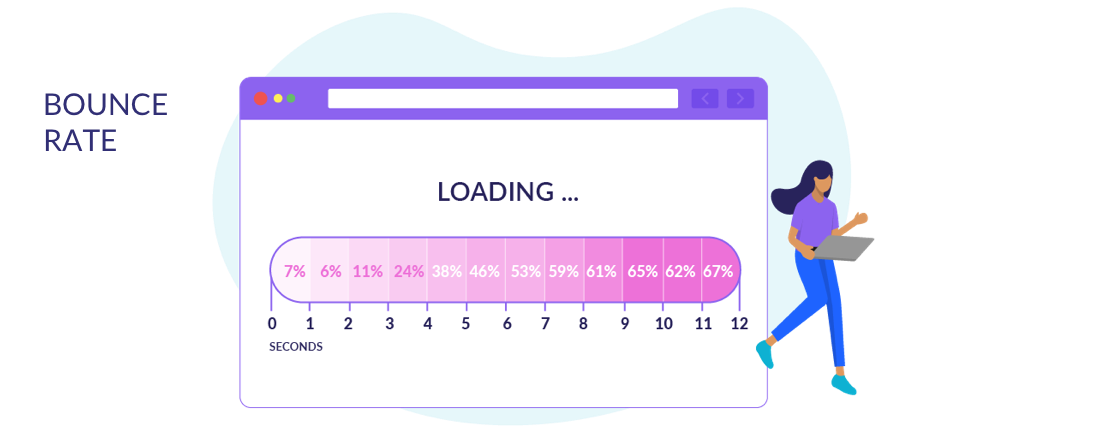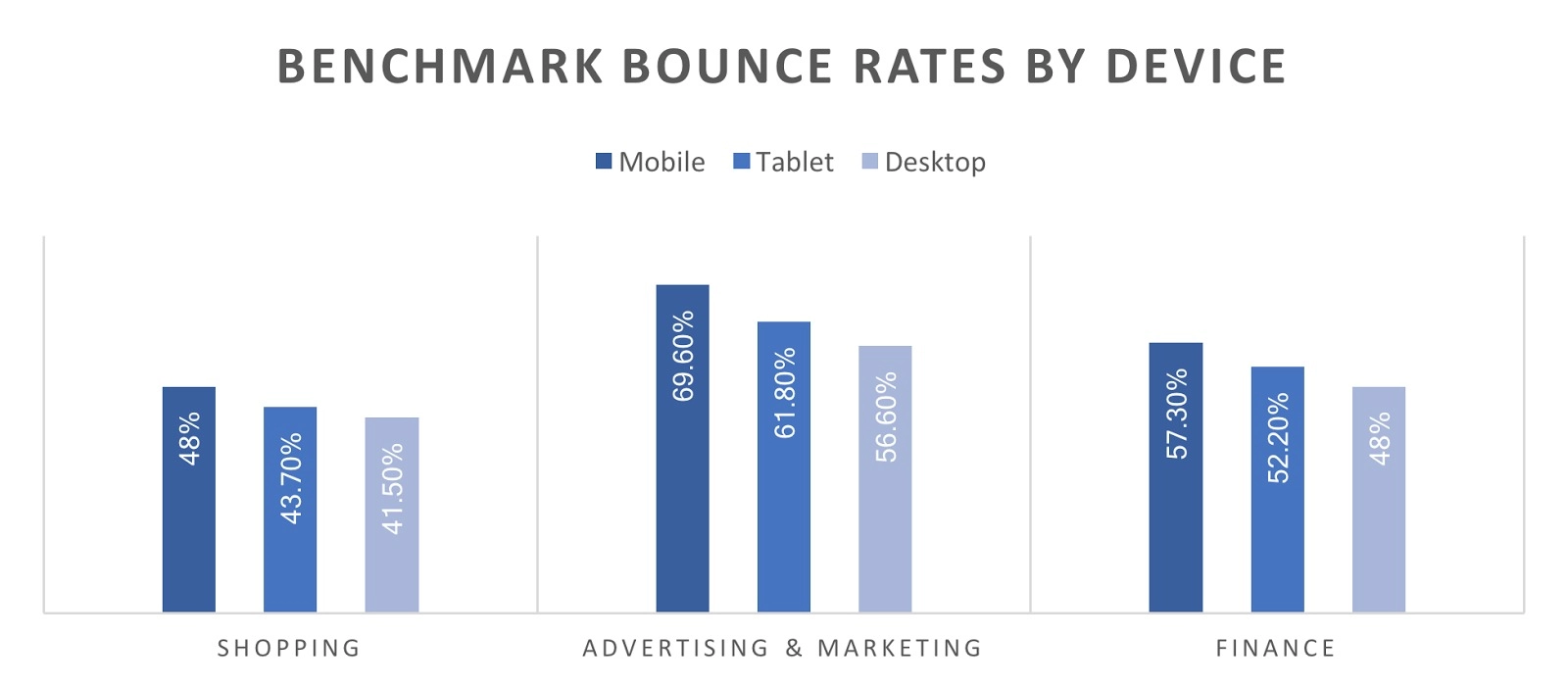Your bounce rate – the percentage of people who leave or ‘bounce back’ to the search results after a single page view – is a metric that matters for most of us.
Despite the average bounce rate being 26-70 percent, the majority aim for this number to be as low as possible. This is because, as a general rule, the higher your bounces, the lower your conversions.
Of course, this isn’t always the case. A high bounce rate isn’t necessarily a cause for concern – we’ll talk about that in a minute. However, as a rule, a high bounce rate indicates an internal issue, whether it be with your website, on-page content, or marketing/SEO strategy.
Hopefully, these 10 common reasons for high website bounce rates can shed some light on why your bounce rates are higher than you’d like them to be.
1. Self-sufficient pages
A high bounce rate isn’t inherently bad. If your affiliate marketing strategy uses landing pages to increase conversions, then your bounce rate for these pages is going to be high. Similarly, if someone is looking for something specific, like a phone number or address, they’ll usually leave straight after sourcing it.
Having a lot of self-sufficient pages naturally increases your overall bounce rate, which is completely normal and nothing to worry about.

2. Misleading meta descriptions
If your meta description in SERPs doesn’t match your on-page content, the user will hit that back button and return to the search results in seconds. This is called a short click, and it’s often the result of poor targeting or keyword baiting.
While you want to optimize your meta description for target keywords, you don’t want to keyword-stuff your description with irrelevant content. Stick to keywords that accurately represent what your on-page content covers, as this will ensure you’re targeting the right audience.
3. Obnoxious ads
It goes without saying that ads can be annoying. There’s nothing more rage-inducing than a popup you can’t remove – although accidentally clicking on a text-obstructing ad might be a close contender.
Stuffing your website with popups, ads, and email subscription forms is a surefire way to create a frustrating user experience that will have people clicking off your website. Keep your ads as unintrusive as possible by ensuring popups are easy to remove and banners are not obstructing content.
4. Slow-to-load pages
If there’s one thing most people agree on, it’s that we don’t like to wait – especially when it comes to technology. Whether we’re waiting for a conference call bridge to connect, an important file to download, or a video to buffer, loading screens can quickly induce frustration.
Websites are particularly susceptible to the wrath of our impatience – a Pingdom study found that 46% of people will abandon a website after six seconds of waiting for a loading page.

Luckily, there are plenty of free tools for site-speed testing and a bunch of things you can do to achieve an optimal site speed.
5. Difficult navigation
When people arrive on your website, they usually know what they’re looking for. It’s your job to ensure the information they need is easily accessible. If they have to delve through the depths of your website for answers, they’ll most likely bounce before they find them, negatively impacting your CSAT score and bounce rate.
Ensure you create a customer-centric website with intuitive functionality. Design a structured, user-friendly navigation bar and appropriately categorize content. Don’t forget to include a search bar for extra efficiency.
6. Low-quality content
If your content is bad, you’re probably looking at sky-high bounce rates. By creating engaging, informative content that addresses search queries, you can significantly reduce bounces from dissatisfied viewers.
You want to make sure your content is optimized for online reading. Ensure your content has:
- Optimized headings and sub-headings
- Short, direct sentences and paragraphs
- Web-optimized line spacing and paragraph breaks
- Internal links and CTAs
Many of us fall into the trap of becoming so inundated with technical tasks that our content begins to suffer. If this is the case, consider investing in RPA development to automate some of the more repetitive, time-consuming technical processes and create time for content writing.
7. Bad links
If a page is suddenly experiencing a rise in bounces for no observable reason on your end, the problem could lie in a bad link from another website.
Misleading anchor text or outdated links can result in a spike of bounces from your referral traffic. You can identify unsuitable links by performing regular website crawls. Once you’ve located any offending links, politely contact the author to request they update or remove them.
You can also disavow the link to prevent it from harming your website’s reputation.
8. A visually unappealing website
Website aesthetics play a crucial role in first impressions and engagement time. An A/B testing study by 3.7 Designs found they could increase user engagement time by 50 percent simply by choosing the best hero image.
Aesthetically pleasing colors, images, and layouts encourage users to stay on your site. A/B testing is a great way to test multiple design ideas, but you could also gather customer feedback via outbound call centers, website forms, or email surveys.
9. Poor mobile-optimization
With 50 percent of all internet traffic coming from mobile devices, it’s safe to say that 2021 demands mobile optimization. Text-obstructing pop-ups, sidebars, and navigation menus are common offenders that can scare off mobile users in seconds, so make sure your pages work smoothly on mobile devices.
It’s also important to note that mobile users do bounce more often. If a lot of your traffic is from mobile devices, this could be a reason for your high bounce rate.

10. Technical issues
If users are only spending a couple of seconds on your page, it could be down to broken plugins, error 404s, or other technical issues.
Perform regular QA testing to keep on top of broken code, missing data, and other technical mishaps that might be impacting the functionality of your website. There are plenty of QA blogs that offer advice on QA testing, including how often to do it, what to test for, and how to find the best tools for the job.
To sum up…
Similar to metrics like your email unsubscription and app retention rate, a high bounce rate can indicate you’re not attracting your target audience. This can be fixed by re-analyzing your marketing/SEO strategy and paying close attention to your meta-descriptions and content. It’s also helpful to assess technical, functional, and aesthetic website issues.
Hopefully, this list will simplify the process of identifying the cause of your high website bounce rate.



